I Saw Myself Staring Back Again


We Need Each Other to Figure Things Out: Grace Miceli Interviewed by Forsyth Harmon
A manual of comics, motivational memes, diary entries, and bulleted lists for how to deal with life.
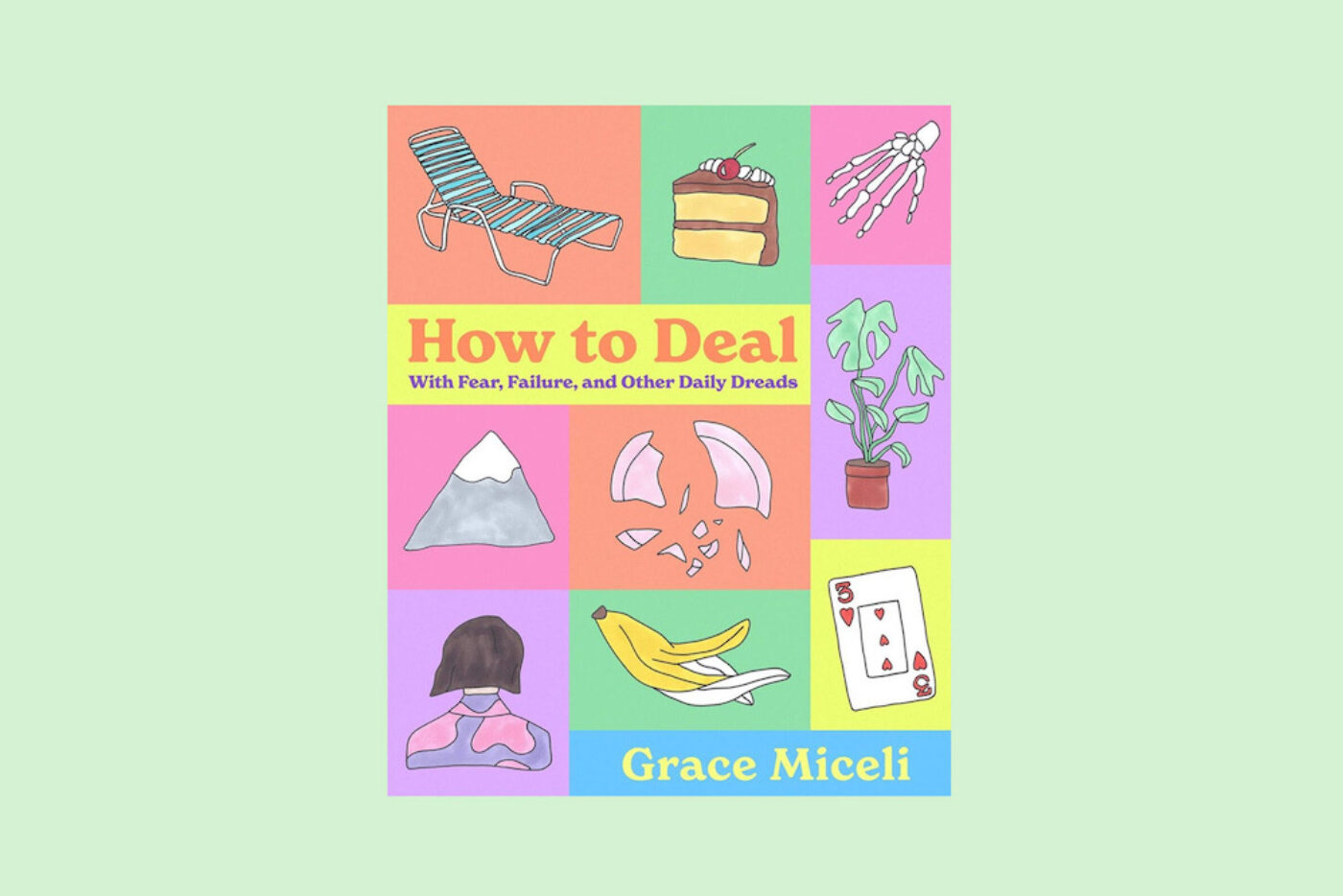
I was introduced to the work of Grace Miceli on International Women's Day: March 8, 2014. I was meeting the poet Monica McClure at muddguts to see "Pussy Pat," a group art show curated by Petra Collins, featuring work by Collins herself, Arvida Bystrom, and others. McClure was delayed, and I waited for her outside, on Montrose Avenue. Through muddguts's windowed storefront, I watched Collins and her cadre, looking fabulous, celebrating their success. I was too intimidated to go in, and I became so self-conscious that I bailed before McClure even arrived. Once home, I researched the artists, alone in bed on my laptop. I scrolled through Miceli's Instagram. Her contribution to the show was a selection of deliberately crude magic marker portraits of the cast of Clueless, and people she called 420 Barbie, Mall Goth, and Future Cat Lady. I saw myself staring back at me.
Since then, I've followed Miceli and her work, which has been featured at MoMA and Tate Modern, in the New Yorker and the New York Times. Her clients include Nike, Urban Outfitters, and MTV. Ever the insecure introvert, it took me seven years to get up the nerve to finally connect with her directly, which probably makes me an ideal reader for her first book: How to Deal: With Fear, Failure, and Other Daily Dreads (Voracious). It's a unique collection of comics, motivational memes, diary entries, and bulleted lists that, taken together, form a kind of how-to manual for dealing with life—both IRL, and the one we increasingly live online. It addresses critical fundamentals of how to manage feelings, including how not to take things personally, how to sit with difficult emotions, how to ignore your inner critic, how to feel connected, and how to endure. In this interview, we chatted about mental health, illuminated manuscripts, anthropomorphism, consumer products, Pema Chödrön, and more.
—Forsyth Harmon
Forsyth Harmon First, congratulations on a brilliant debut. You tackle knotty existential questions and mental health issues with empathy, wisdom, and humor. As an artist working across several mediums, what inspired you to author and illustrate a self-help manual?
Grace Miceli Thank you so much! How to Deal is a project I've been working towards for the last few years, I think without even knowing it. I spent time collecting guidance, asking myself many questions, and then channeling the search for answers through illustrations. I was inspired to create this book because I needed it for myself. I've heard so many artists express that what they create is for younger versions of themselves, and How to Deal is that for me: a guidebook for someone who isn't ready to admit that it might be time to try looking at things a little differently.
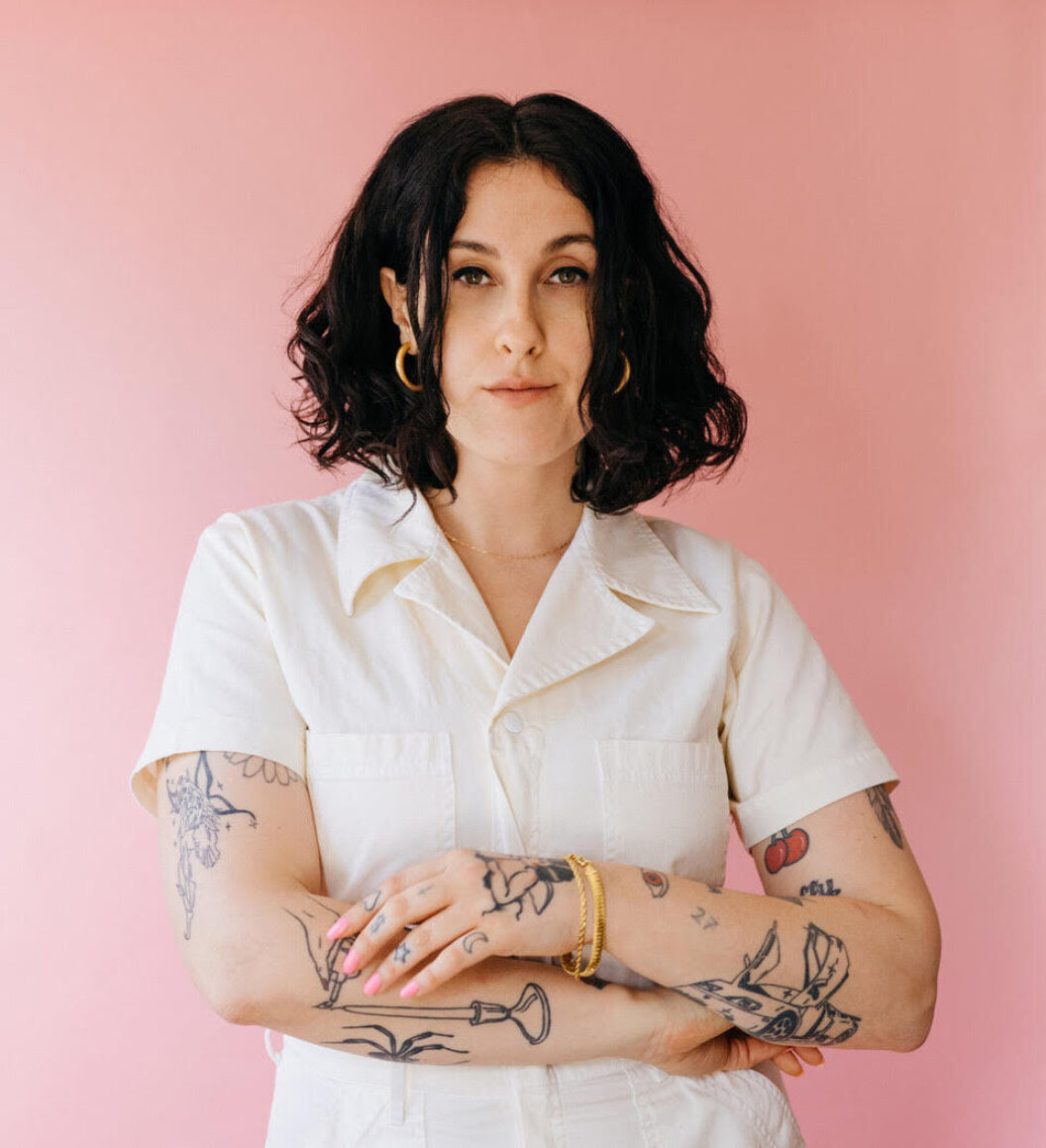
Photo of Grace Miceli by Tatum Mangus.
FH I love that you channel wisdom through illustration. The way you combine image and text calls to mind the illuminated manuscript—the majority of which are religious, like theBook of Hours—which I suppose could be considered a kind of self-help. While graphic novels have flourished for decades, your book is representative of a new incarnation of the illustrated advice book, along with Jordan Sondler'sFeel it Out and Adam J. Kurtz'sThings Are What You Make of Them. Why do you think there's such an appetite for this content, in this form, now?
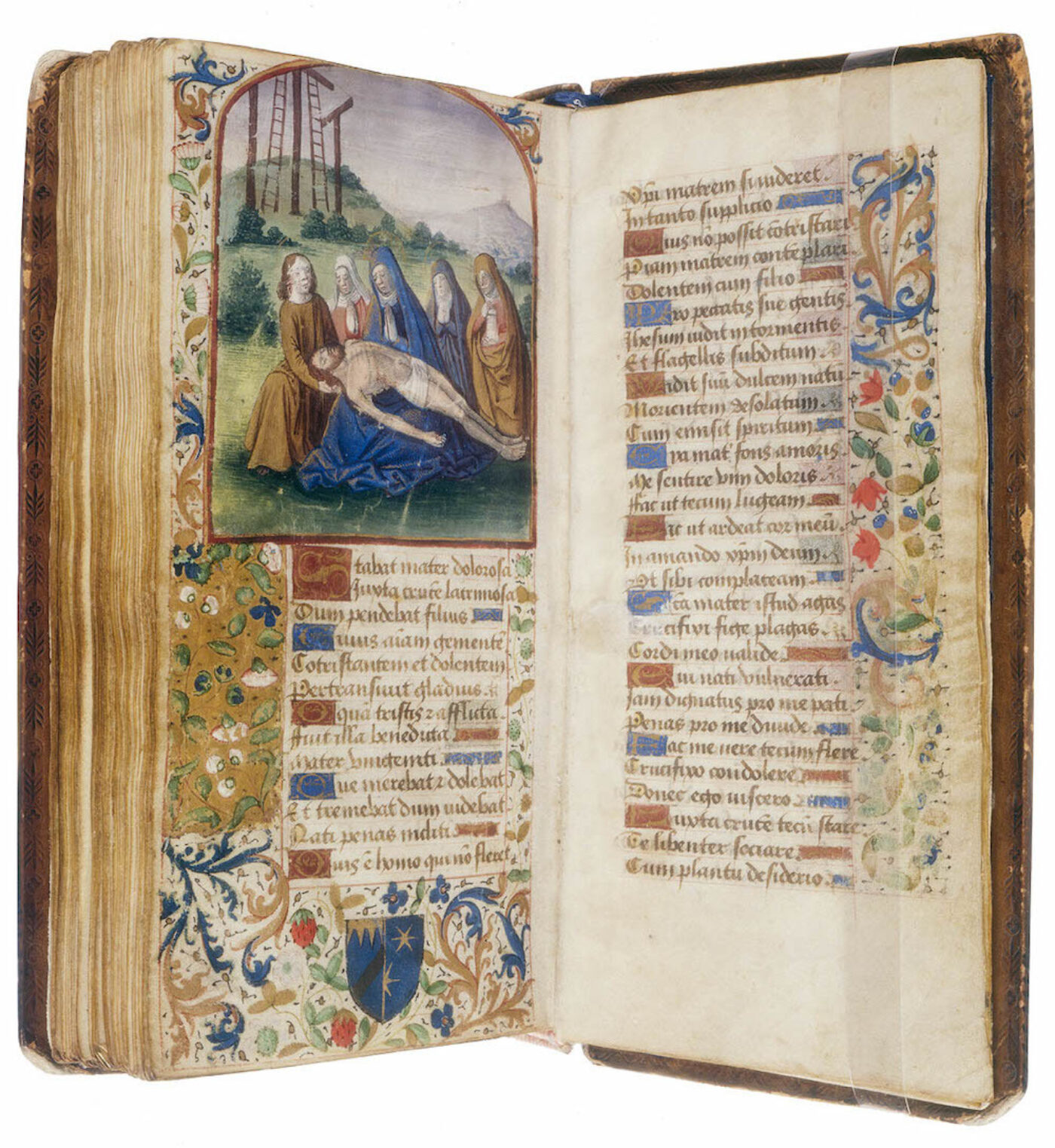
Book of Hours, Bourges, ca. 1480, from the State Library of New South Wales.
GM I've been reflecting on this general movement of creating more personal and honest work, which I've witnessed in many of my peers and friends. I can only speak from my own experience, which is that this body of work is an honest reflection of who I've been becoming. In the years before this shift, my work was playful and snarky and fun—but it wasn't vulnerable at all, which reflect where I was at in my personal life. I think watching Adam and Jordan and other artists be honest about what they were experiencing gave me the courage to start caring less about trying to create work that was "cool" (whatever that even means) and just show up as myself.
FH Or show up as a… dog! Throughout the book, you employ an anthropomorphic narrator—a black-and-white dog—to both represent uncomfortable feelings and dispel advice to manage them. For instance, in the first chapter, this dog admits, "I've realized I'm most afraid of / the thoughts I have about myself," and later suggests, "The stories you keep telling yourself / you can let them go." In one of the book's to-do lists, we see the item: "Take Tony on a long walk"—and the book is dedicated to Tony. Is the illustrated dog based on a real dog? Tell me more about this alternately anxious and astute creature, and his role in How to Deal.
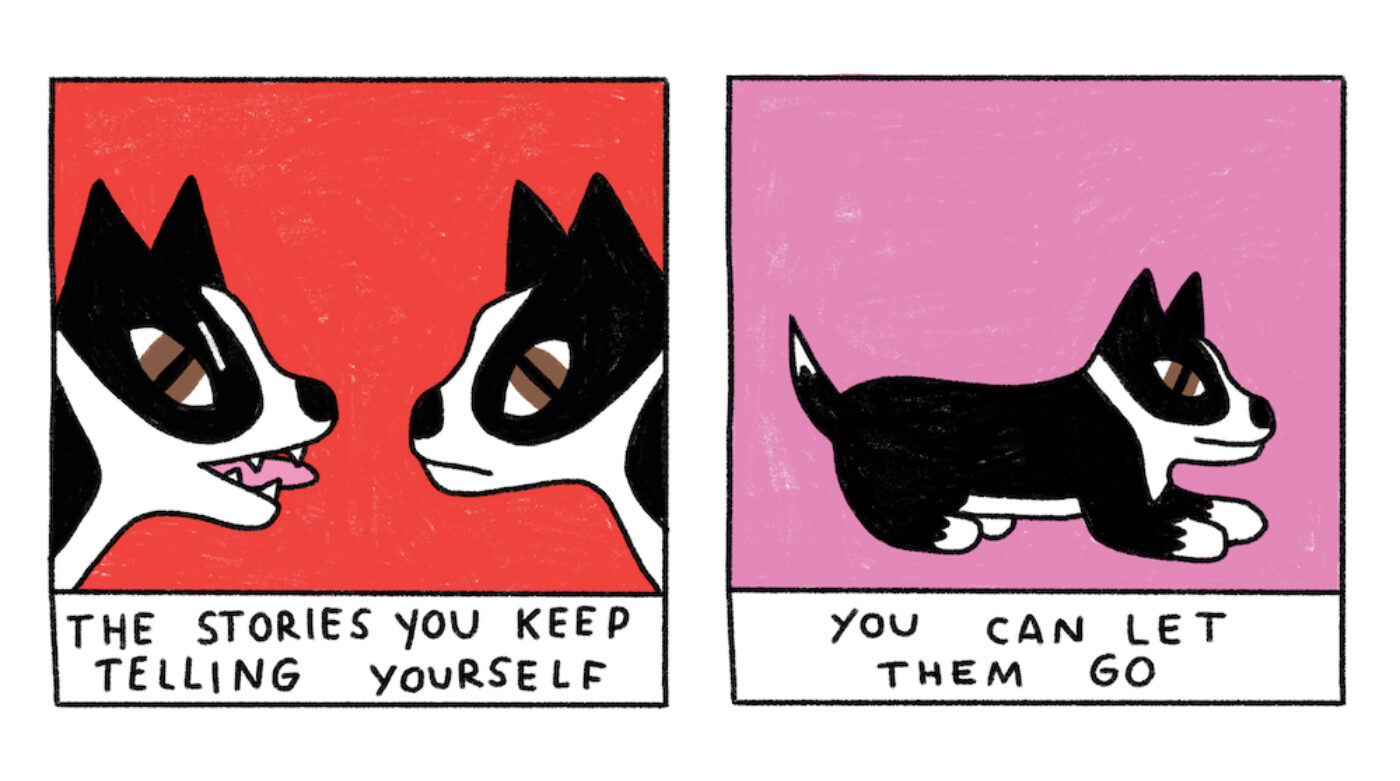
Illustration from How to Deal: With Fear, Failure, and Other Daily Dreads by Grace Miceli.
GMTony is my dog in real life! I joke that when I adopted Tony, he taught me how to love again—but I think that is actually totally true. We met when I was starting to crawl out of a really dark depression, and it was so important for me to be able to care for another living thing, to get outside of myself. I see me and Tony as having this symbiotic relationship, especially with anxiety. In a lot of ways, he's me. I have an aversion to trying to illustrate myself in a more straightforward way. It's something I'm still figuring out, like if I should just face my fears and do it or keep pretending I'm a dog forever.
FH I get this! I didn't draw any faces in my illustrated novel, Justine. I focused, instead, on objects. In your book, and across your oeuvre—including illustration, animation, comics, product design, and murals, you also represent objects—sometimes contemporary: smartphones, hand sanitizer; sometimes nostalgic: boombox, disco ball; and often idiosyncratic: coffin, La-Z-Boy. Kitchen knives and potted plants recur. Can you talk a bit about how and why you use these objects?
GM All the objects that I use are symbols, illustrated in an attempt to evoke certain feelings, situations, or moods that are harder to express through words. Over the years, I've developed this associative practice where maybe I'm watching a film, reading a book, listening to a song, or just ruminating on something a friend has said to me, and I'll start a running list of objects and words that flow from that, to try and recreate or just make sense of my experience of it. A lot of my work is obvious and frank, but I think when I'm making work with the illustrated objects, I'm letting myself play more delicately with implications. Sometimes I'm hinting at a traumatic memory, and sometimes I'm just trying to express what it felt like to be a bored teen wandering around a suburban mall with nothing else to do.
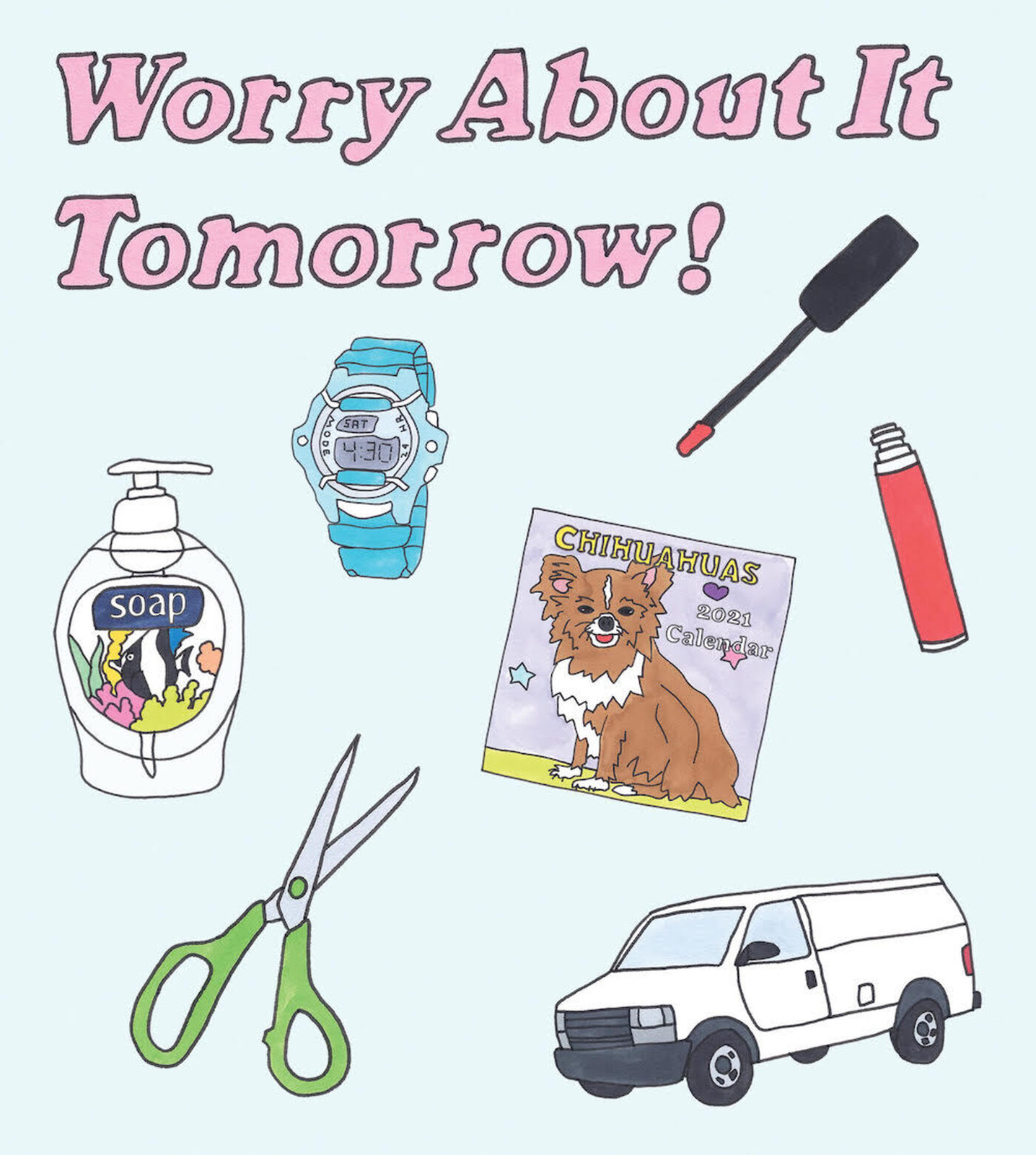
Illustration from How to Deal: With Fear, Failure, and Other Daily Dreads by Grace Miceli.
FHI especially love a particular subset of your object work: the iconic consumer product illustrations. You overwrite them to ask existential questions, address painful mindsets, and suggest remedies. One of my favorites is a Head & Shoulders shampoo bottle détourned to read, "I'm avoidant!" How did this practice originate? What does it mean to you?
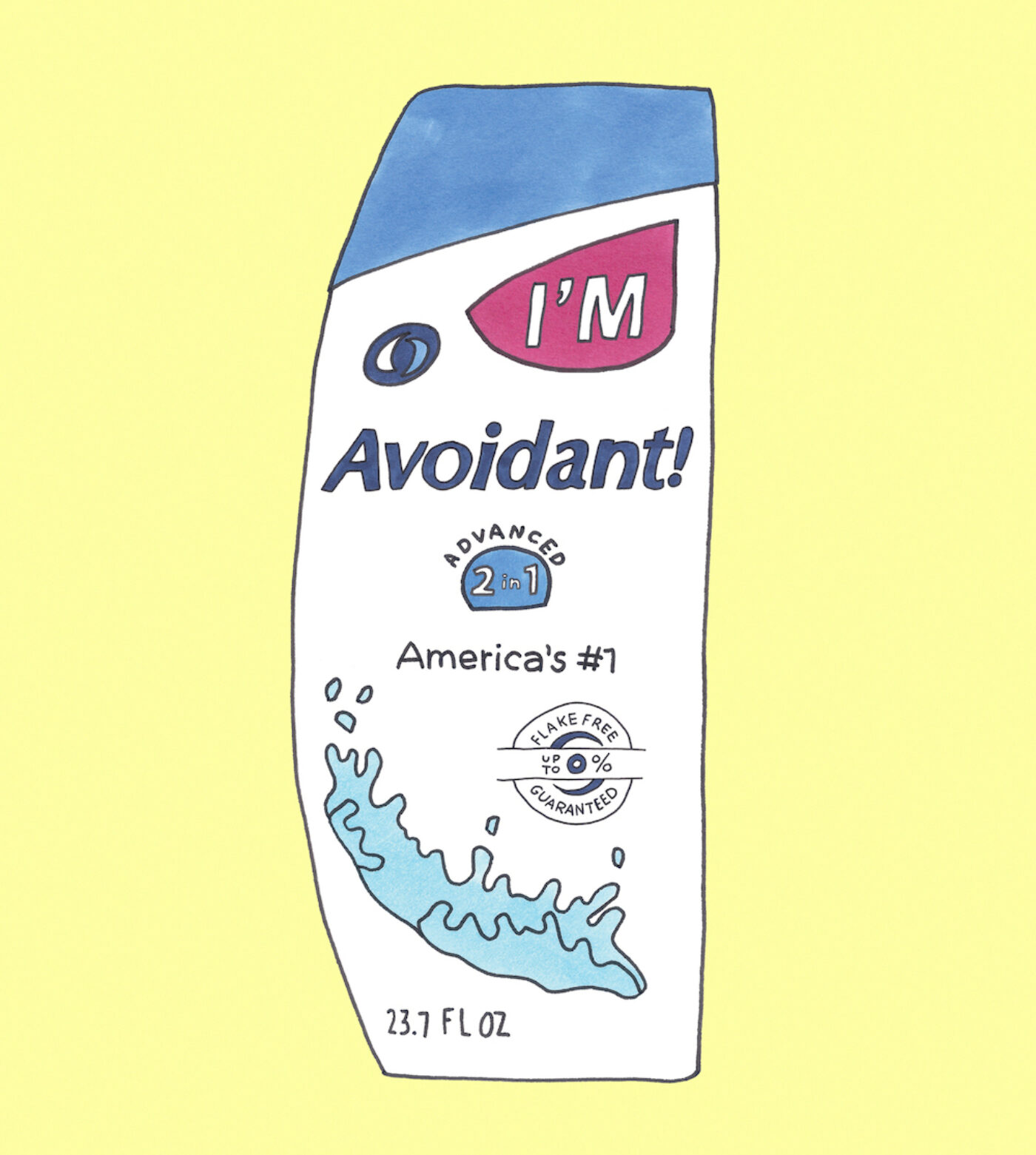
Illustration from How to Deal: With Fear, Failure, and Other Daily Dreads by Grace Miceli.
GM I made the first cereal box drawing in 2015. Back then, I was exploring my forever-complicated relationship to food. Ever since I was a teen, I've turned to food for comfort. Over the years, these illustrations really took on a life of their own—expanding to all sorts of product references. I'm always thinking about how I've come to identify with certain brands or how certain packaging design can elicit strong nostalgic reactions. My mom also used to be a packaging designer! So maybe there is something there too.
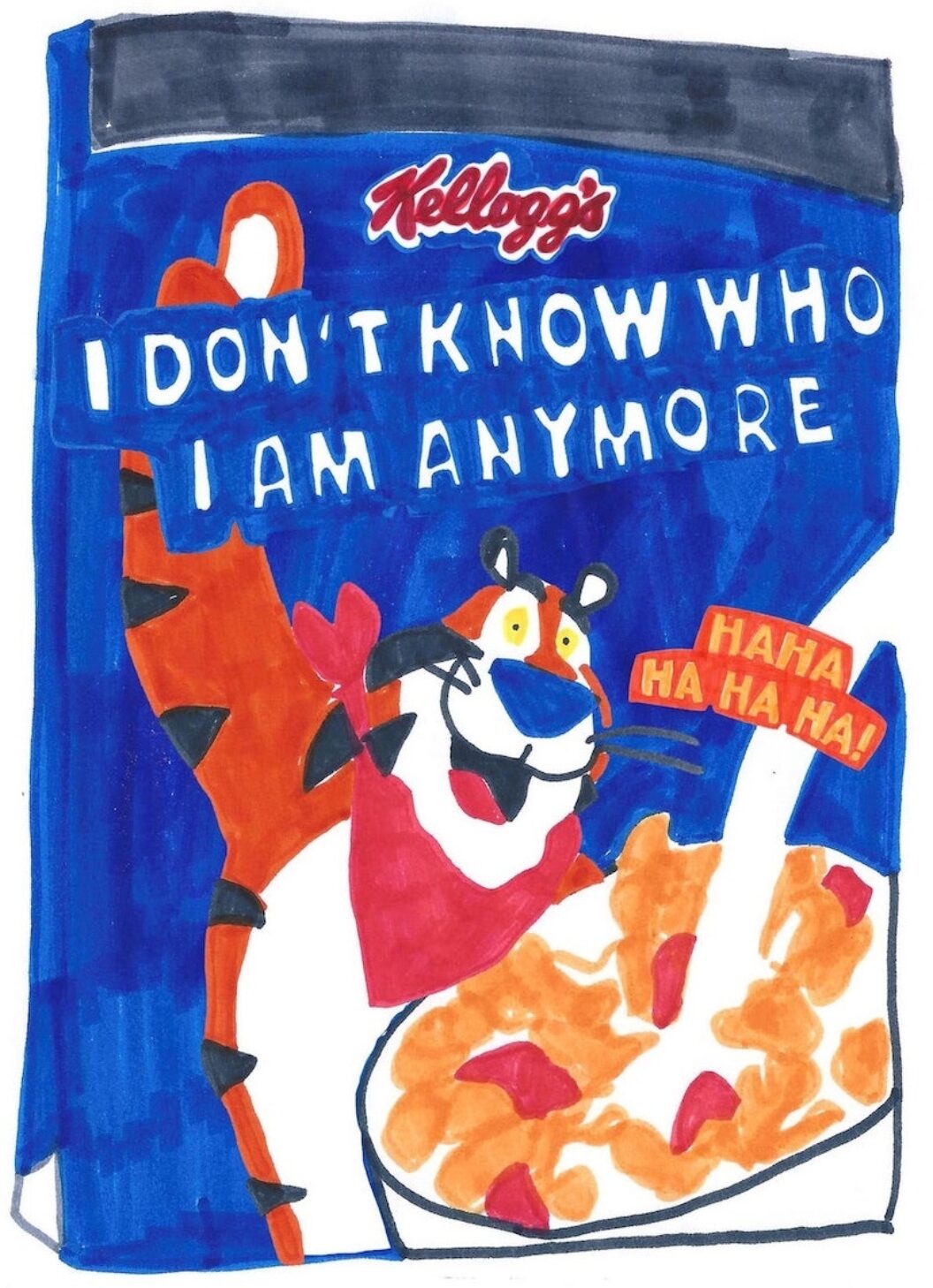
Détourned product illustration, Grace Miceli, 2015.
FHYou curated the online Art Baby Gallery, and have a strong Instagram presence—and your book specifically addresses the relationship between internet use and mental health. Say more.
GM The internet saved my life in a lot of ways when I was younger. As a teen, it gave me a place to express myself, especially growing up in the suburbs where I felt like an outsider. And online, I found the artists whose work I curated into the DIY exhibitions that really propelled me early on. Most of the brands that have hired me found my work through social media. My first "viral" moment online came out of a sweatshirt I made for my friend Laia that said: "Girls at Night on the Internet." For years, my relationship to it was that I eagerly shared whatever I was creating without much thought. There was a lot of freedom and possibility.
But the internet is a very different place than it was ten years ago. I find myself way too concerned with performance and tracking insights and checking things, and often have dreams of running away or inventing a future that doesn't rely so much on it. It probably also has something to do with getting older. I wonder if the internet is meant for youth culture. I know it's silly to contemplate retiring from something at thirty two, but I know I need to figure out a better relationship to social media. I've started hosting interviews on Instagram Live with friends and peers. We talk about how it comes down to trying to get to a place where you care less, but I don't know how to do that when the platform is responsible for my financial security. Even beyond that, social media allows for so much outward gazing, and makes it easy to lose touch with ourselves. But I do want to figure out how to have fun online again.
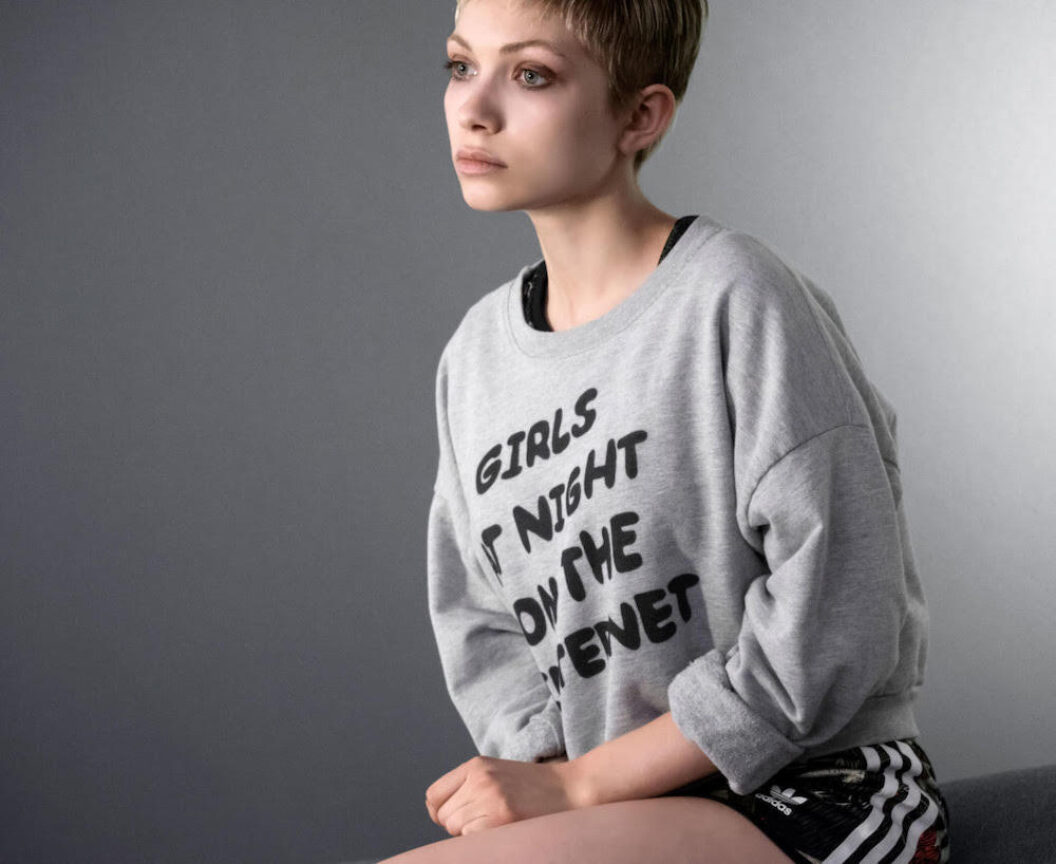
Tavi Gevinson in Grace Miceli's sweatshirt. Photo courtesy of the author.
FH The conclusion of How to Dealincludes a list of helpful resources—from Dharma Punx to Melissa Broder to bell hooks. I saw their influences throughout—for instance I could feel the wisdom of Pema Chödrön's When Things Fall Apartin chapter two, "How to Stay When You Want to Run Away." Talk more about the teachers, artists, writers, and mental health professionals who inspired you.
GM My recovery and stability are so dependent on the wisdom that I've gained from all my teachers, whether they are Buddhist pastors or psychologists or authors or comedians. This book would literally not be possible without them. I really do think that all of us create work that is a combination of our interests. Sure—it's a unique interpretation, and in our voice—but none of my thoughts are original. I'm sharing the lessons I've learned through my chosen language of illustration and comics. I'm so grateful to have been exposed to the work of everyone I mentioned in my resources. I don't know of a more awe-inspiring experience than hearing someone speak a thought out loud that you have known in your body forever but have not yet been able to put the words to.
FH What advice would you give to aspiring writer-artists?
GM I think it's really important to find peers who you can talk with about your dreams and struggles. It can be really lonely, being an artist working on your own all of the time. There are only so many conversations you can have with yourself before you start to lose it. I think we need each other to figure things out and move forwards.
How to Deal: With Fear, Failure, and Other Daily Dreads is available for purchase here.
Forsyth Harmon is the author and illustrator of the illustrated novel Justine (Tin House, 2021). She is also the illustrator of Girlhood by Melissa Febos and The Art of the Affair by Catherine Lacey, and has collaborated with writers Alexander Chee, Hermione Hoby, Sanaë Lemoine, and Leslie Jamison. Forsyth's work has been featured in Granta, BOMB, Refinery29, the Believer, and more. She received an MFA from Columbia University and currently lives in New York.
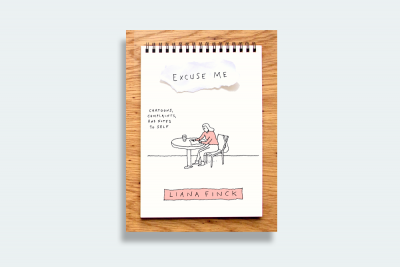

How do I build a fugitive choreography, one that's always in the process of escaping itself, then coming back to reaffirm itself, only to slide away again? The act of interpreting a choreography is made live by the performers, which is the invitation in my work.
Source: https://bombmagazine.org/articles/grace-miceli-interviewed/
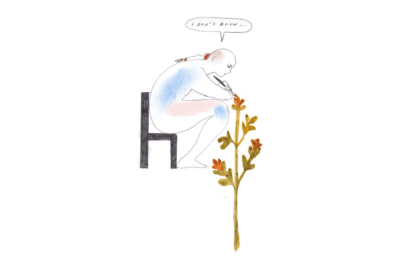
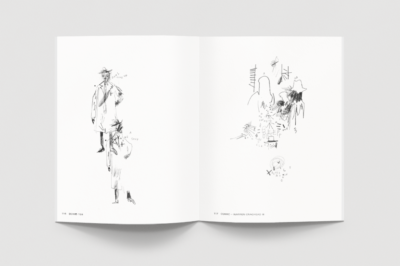
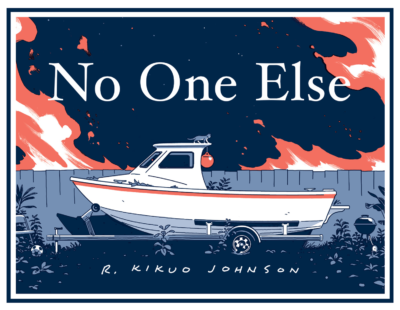
Post a Comment for "I Saw Myself Staring Back Again"